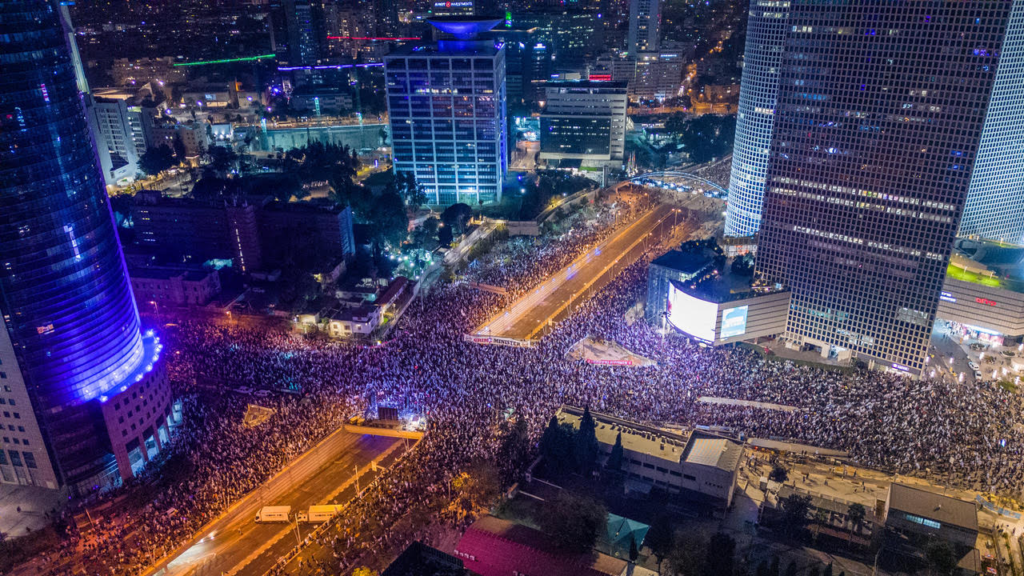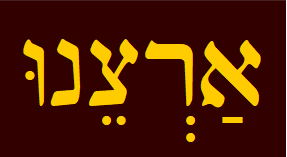We must keep the memory of the Holocaust alive
THESE DANCING, Bavarian coopers receive applause from the delighted crowd. I stare at the figurines. No longer are they 16th-century coopers but 20th-century hassidim, pious Eastern European Jews who are dancing and singing themselves into ecstasy to come closer to God. The sound of the chimes starts to warp into a distant rumbling that seems to be coming closer.The “Good Jews” Are Never Good Enough
I hear the staccato of machine gun fire. Its volume increases with each chime. I hear the cries of the dancing Jews as they fall into the pits they have dug with their own hands. I see my distant relatives in Pinsk being shot by the drunken officers of the mobile killing units, the Einstazgruppen, in July 1941. I hear the machine gun fire, the screams and the sobbing of one million victims of the four Einsatzgruppen.
The chiming continues as the coopers dance and the screams continue as old photographs I have seen return from memory: Jews, young and old, being led to their execution in Ponary, the ninth Fort, Babyn Yar and Lvov, as SS men laugh as the victims attempt to cover their nakedness. I hear the screams of Jews in Birkenau, Treblinka, Sobibor, Belzec and Chelmno and the cries of terror from death by gas. The screams and the chimes of the Glockenspiel fuse – they are one. A feeling of shame passes over me: my own vague nightmare seems to belittle the suffering of one million Jewish children, five million Jewish adults and millions of other humans whom the Nazis murdered.
The chiming of the Glockenspiel pauses and the horrible cries leave me. The uppermost level of the balcony presents its lone, small figurine: a crowing cock. The sound of the chime changes slightly and mimics the sound of a bird at cockcrow. Yet, I can only hear the whistle of trains packed with human cargo.
I can only see 300,000 Warsaw Jews being loaded like cattle onto trains for Treblinka by smiling SS men brandishing truncheons. I see 400,000 Hungarian Jews destroyed in Birkenau in 10 weeks during the summer of 1944. The mouth of the bird opens but it is not his crowing chime that I hear, only the whistle of trains heading for the death camps of Auschwitz, Sobibor and Treblinka.
The whistling disappears. The chiming stops. The tourists applaud and begin to disperse. In envy, I look at them and ask myself: Can’t a Jew in Munich who stands at Marienplatz 8 listening to the chimes of the Glockenspiel simply enjoy the beauty of the colorful figurines, the aesthetics of the Rathaus facade and the clarity of the chimes without thinking of mass graves, gas chambers and crematoria? No.
For the destruction of European Jewry – the systematic murder of one out of every three Jews living on earth – took place in our epoch, a minute span in the history of mankind. Memory must overcome the ravages of time. We must see photographs of the Holocaust period and read the accounts of those who lived through it.
Jewish Anti-Zionist ExcusesHow the Palestinians got their name
Diving into the most plain assertion of Jewish Anti-Zionist tokens, we can also unpack further. Many of them today may assume innocence by repeating the talking point that “Zionism has nothing to do with Judaism” (a foundational lie for token Jewish opponents to the majority-consensus [IHRA] definition of antisemitism). Similar to the concept of “racial colorblindness”, it is problematic to assert that Zionism and Judaism have no connection (even if coming from ignorance, fear, or good intentions). Zionism: the belief in the Jewish right to revive self-determination in [at least part of] the indigenous, ancestral homeland of the Jewish people is an inherent element of Jewish heritage, not only because half of the world’s Jews live in and rely on the State of Israel for refuge and freedom, but because there would be no Jewish people without the establishment of the Kingdom of Israel, over 3,000 years ago. Zionism isn’t only part of Jewish heritage. It is a moral value to embrace — not an abstraction to feign estrangement from.
To drive the point home, out of 613 laws in Judaism, only around 270 can be practiced today outside the land of Israel. Observant Jews worldwide have prayed for return (some even attempting return) to Israel from forced exile by many empires for centuries (secular and religious alike). The hypocritical, numerically microscopic ultra-Orthodox faction of Neturei Karta (less than a third of one percent of world Jewry) have only around 100 members who actively protest against Israel and have many more who’ve returned to live in Israel — only denying the State of Israel’s right to exist until the arrival of the Messiah.
For thousands of years, Jews have practiced land-specific Israelite rituals, including in diaspora for holidays like Sukkot, Shavuot, Hanukkah, Tisha B’Av, Pesach (Passover), and more, focusing on our connection with the land of Israel, its sacredness, the capital of Jerusalem, and our return. Among many more reasons, we can confidently affirm that Zionism is intrinsic to Jewish heritage.
Some Anti-Zionist Jews who actually recognize these innate ties, try to eliminate these parts of Jewish identity or try to fabricate new traditions in their place. Saying the mourner’s kaddish for neutralized armed Palestinian terrorists, performing justice Havdallah ceremonies in daylight while widely known to be meant for nighttime, manipulating the traditional Passover seder to omit the Exodus and the age-old saying “L’shanah ha’ba’ah bi’Yerushalayim” (“Next Year in Jerusalem!”), redacting mentions of the word “Israel” in Jewish siddurim (prayer books) and texts are but a fraction of losing practices. Ultimately, these are all losing practices because there is nothing that can save “The Good Jews” from antisemites.
What we’ve learned is that Anti-Zionism, like many fads of antisemitic and totalitarian conformity, is futile. No matter the alibi at the time or the place in question, to the antisemite, it’s not just about our insistence on specific elements of particularity and peoplehood that will never be acceptable, it’s about our existence at all. (h/t L_King)
Before Israel was founded, several prominent Jewish and Zionist organizations used the name “Palestine.” These included The Palestine Post newspaper and the Palestine Symphony Orchestra, which are now The Jerusalem Post and the Israel Philharmonic Orchestra.
At the time, many Arabs in British Mandatory Palestine considered themselves part of Greater Syria rather than “Palestinians.” In 1937, a local Arab leader told the Palestine Royal Commission, “There is no such country [as Palestine]. Palestine is a term the Zionists invented! Our country for centuries was part of Syria.”
Arab historian Philip Hitti echoed this sentiment shortly before Israel declared independence, saying, “There is no such thing as Palestine in history, absolutely not.”
The watershed moment for the “Palestinian” national movement came after the 1967 Six-Day War, when Israel won control of Judea and Samaria from Jordan. The words of author Walid Shoebat of Bethlehem sum up the profound shift in local Arabs’ identity: “On June 4, 1967, I was a Jordanian, and overnight I became a Palestinian.”
Since 1967, a whole national mythology has been created around the terms “Palestine” and “Palestinian.” For example, the Palestinian Arabs have claimed to be descendants of the Canaanites who preceded the ancient Israelites and Philistines in the Holy Land.
In 2018, Palestinian Authority chief Mahmoud Abbas told the United Nations’ Security Council, “We are the descendants of the Canaanites that lived in the land 5,000 years ago and continued to live there to this day.”
But most Palestinians trace their origins to prominent tribes in Saudi Arabia, Syria, Iraq, Yemen and Egypt. Yasser Arafat was born in Egypt. Even the Kanaan family in Nablus (Shechem) traces its ancestry to Syria. In any case, the Canaanites had disappeared more than 1,600 years before the Arabs first arrived in the Holy Land.
Preposterously, Palestinians have even asserted that Jesus was a Palestinian. In a 2013 Christmas message, Abbas called Jesus a “Palestinian messenger.” In 2019, Palestinian-American activist Linda Sarsour posted on Twitter, “Jesus was a Palestinian of Nazareth.”
We beg the pardon of Mr. Abbas and his fellow fantasists, but Jesus was a Jew from Judea, which was named Judea because it was and still is the homeland of the Jewish people.
While the Arabs of the region are free to call themselves whatever they want, they are not free to hijack the 3,000-year history of the Holy Land for themselves. In the end, the name “Palestine” represents the Jews’ original dispossession of their homeland 1,900 years ago.










































